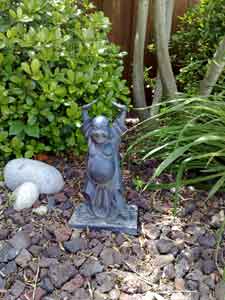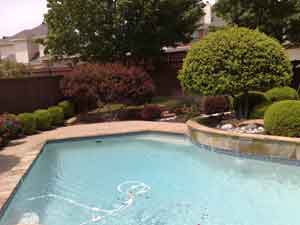|
Advertisement
|
Home -> Nokia Phone Reviews -> Nokia N95 8 Gig
Nokia N95 8 gig US Edition N95-4
Editor's rating (1-5):     
Discuss this product
Where
to Buy
Reviewed April 28, 2008 by Lisa Gade, Editor
in Chief
As Yogi Berra said, it's deja vu all over again. . . for the 4th time. The Nokia N95 8 gig US edition (known fondly by it's model number, N95-4 by S60 lovers) is indeed the 4th version of Nokia's extremely popular flagship phone. To be fair, there have been two worldwide models, the N95-1 and N95-2, and two US models that mirror these (the N95-3 and now the N95-4). The N95-4 is actually just the N95-2 (N95 8 gig) with US rather than Eurasian 3G bands. The N95 US edition (N95-3) was more than a remake of the original N95 with US 3G, it boasted several improvements that Europeans didn't see until the N95-2 8 gig was released. Follow all that? Hope so.

What does all this mean? If you're outside the US, the N95 8 gig (N95-2 being the more logical choice) has significant hardware improvements over the original N95-1, having a larger battery, more memory and a slightly larger display. If you're a US buyer, the N95-3 offered these improvements (except the larger display), so the choice is harder and the difference comes down to two things: storage and newer firmware. The N95-3 (like the original N95-1) has a microSD card slot for storage and the 8 gig model has (surprise) 8 gigs of flash storage built in but no microSD card slot. Though Nokia specs the N95-1 and N95-3 as supporting up to 2 gig microSD cards, we've used a variety of SDHC cards in higher capacities with no problems so you can in fact have an "8 gig N95" just by inserting an 8 gig SDHC microSD card.
Since the first release of the N95-1 and N95-2, there have been firmware improvements to the camera, GPS, and updated software (N-Gage support, Flash Lite 3, demand paging memory management). Any N95 model variant owner can enjoy these via a firmware update using Nokia's updater in Windows, except N95-3 owners. Nokia has yet to release a major firmware upgrade for the N95-3, so the N95-4 is the only way to get these improvements in a US 3G model right now. We assume Nokia will release a serious firmware upgrade for the N95-3 (it's been months since the N95-1 got a major firmware revamp). Currently, the N95-4 has the latest, greatest firmware since it's the new kid on the block and you'll enjoy all these improvements out of the box. For those who are new to Nokia and S60, firmware updates are free downloads and are quite easy to install.
Like the US N95-3, the Nokia N95-4 comes with a US warranty from Nokia, so there's no need to send it overseas for repair should it need work.
Features at a Glance
The N95 is a well-known commodity, having first released in April 2007, so we won't do a detailed re-review here. But for those new to the N95, we'll give a run-down of the N95-4's many features. The N95-4 is an unlocked quad band GSM world phone that will work anywhere GSM service is available (and will accept any GSM carrier's SIM). It supports the 850/1900MHz US 3G and 3.5G bands (UMTS and HSDPA) but not the 2100MHz 3G band used in Europe and Asia (the original N95 and the N-95-2 have only the 2100MHz band). The phone has a 5 megapixel camera with Carl Zeiss autofocus lens and an LED flash. The N95 family leads all phones (with the possible exception of the Nokia N82) with its imaging capabilities which also include shooting incredibly good VGA video at 30fps.
The smartphone runs Symbian S60 3.1 (3rd Edition feature pack 1), and can sync to Mac and Windows computers. Windows syncing software is on the companion CD and you can download an iSync plugin for the Mac from Nokia's web site here (be sure to download the N95 8 gig version of the plugin and not the N95 plugin). S60 3rd Edition offers full PIM applications (contacts, calendar, tasks and notes), as well as email and one of the best full HTML web browsers on a mobile phone (the iPhone is the only one that can compete).
The N95 8 gig has a music player, FM radio with RDS, video player and a streaming Internet player that handles Nokia's free programming (Sony Pictures trailers, Reuters News, RocketBoom, YouTube mobile and more). Slide the display up to reveal a numeric keypad, and slide it down to reveal the multimedia playback controls.
The smartphone comes only in black and has a soft touch finish. It has a 3.5mm stereo headset jack and a stereo headset is included in the box. Alternatively, you can use your favorite headphones for music playback. You must use a headset or headphones to use the FM radio since it uses the headset as an antenna. The N95-4 weighs 8 grams (.28 ounces) more than the N95-1 and N95-3.

The N95 also features WiFi 802.11b/g, Bluetooth 2.0 +EDR with Bluetooth stereo A2DP and an internal GPS with aGPS support. It comes with Nokia Maps software with nearly world-wide map coverage and our review unit had the latest 2.0 beta maps which adds some very cool features (maps 2.0 beta is a free download from Nokia's web site for N95 owners and the N95-4 currently ships with the older Maps 1.2). The QVGA 240 x 320 16 million color display measures 2.8 inches, and it's got an light sensor with automatic brightness control. The N95-4's display isn't as deeply inset as the N95-3's, though it's not flush with the casing either. The display is very bright and sharp, though it's a tiny bit less bright than the N95-3's display and has slightly reduced outdoor visibility.
|
|
In the Box
The Nokia comes with a mini USB to USB sync cable, compact world travel charger with US prongs (AC-5U), Lithium Ion rechargeable battery BP-6F, a remote with detachable 3.5mm earbud stereo headphones (the remote controls music playback and has a mic), 3.5mm to AV cables (RCA connectors for video, left and right audio), a software CD with PC Suite, thick printed manual and a getting started guide.
Phone Features and Data
All Nokia N95 models are quad band GSM world phones supporting the 850/900/1800/1900MHz bands. The US versions (N95-3 and N95-4) are unlocked for use with any GSM carrier. The biggie here is US 3G support, which is useful for AT&T customers (there's EDGE for non-3G carriers and regions). Other than US 3G, there is no difference between the N95-2 that came out a few months ago for the European/Asian market and the N95-4. The UMTS/HSDPA radio works on the US 850/1900MHz bands and has an indicator for UMTS under the signal strength bars ("3G") and one for HSDPA ("3.5G"). When not connected for data, the phone merely shows "3G", but it changes to "3.5G" when a data connection is active. It does not have the 2100MHz 3G band used in Europe.

The iPhone and the N95 8 gig.
Data speeds on AT&T's HSDPA network were very good in our tests, with an average download speed of 700k on DSL Reports mobile speed test. Nokia's best-in-the-business web browser downloads and renders web pages more quickly than Windows Mobile's IE and Palm's web browser, with greater desktop fidelity. It's topped only by the iPhone's web browser, which also uses Safari technology. For web browsing, HSDPA isn't as fast as WiFi 802.11g, but it is hugely faster than EDGE. Nokia includes their usual email client, unchanged from the original N95 that handles POP3 and IMAP email. Nokia offers Mail for Exchange as a free download for those who wish to use the N95 with an MS Exchange server. There is no BlackBerry Connect software for the N95.
As with most Nokia S60 phones, call quality is excellent, and the phone sounds very good with a wide variety of Bluetooth headsets. We did find the N95-4 a tad quieter than our N95-3 through the built-in earpiece, and it's not loud enough for rowdy venues like ball games or busy malls (turn on the excellent speakerphone or use a headset to overcome this).
Camera
One of the N95's top features is its 5 megapixel camera with Carl Zeiss autofocus lens. Indeed, the camera takes excellent shots, and even low light shots are decent, despite the LED flash, though there is noticeable noise in indoor shots. Since the N95 8 gig US model has the latest firmware, the camera is faster to launch and save high resolution images. The N95 family of phones are among the best, if not the best camera phones on the market. The images are better than the 3MP point-and-shoot cameras of old, though still not as good as today's 5MP dedicated camera. They're good enough for high quality printing at 4x6 and 5x7 resolution, and well-lit photos even make for decent 8x10 prints. The camera offers a wealth of settings, which you can read about in detail in our N95-1 review. Maximum photo resolution is 2592 x 1944 and these images range from 1 to 1.5 megs. The N95-4 tends to oversharpen images, just as do other N95 variants.
Video is still simply superb, and this is where the N95 beats the pants off of the Sony Ericsson K850i 5MP camera phone. The N95 family can shoot video in VGA resolution at 30fps-- considerably better than most youtube video and it looks great when played back on a computer.

|
 |
These sample photos were taken at the highest resolution at the mid sharpening level. Unedited other than resizing for use here. Click on a photo to see a much larger version in a new window.
GPS and Maps 2.0
The N95 family of devices have come a long way in the past year when it comes to GPS performance thanks to a series of firmware and software upgrades. The latest software, Maps 2.0 is the fastest yet at getting a GPS fix (generally within 30 seconds for a cold fix outdoors and under 10 seconds for a warm fix) and routing has significantly improved. While our friends in Europe generally got good navigation advice, those of us in the US often took the long way home. Happily, the N95-4 (and N95-3 when fitted with the Maps 2.0 update downloadable from Nokia) get logical and expedient routing. Maps gives you maps, routing and POIs (points of interest) for free but you must pay for turn-by-turn navigation which includes spoken directions. The fees are $12.69/month, $98.78/year or the bargain-priced 3 years for $112.89. If you switch phones, you'll need to contact Nokia to activate the service on your new phone. The male voice is the clearest we've heard on a mobile GPS and the stereo speakers are loud enough to be heard in a noisy pickup or sports car.
New for 2.0 is walking mode and traffic. Walking routes are optimized for-- you guessed it, walking and as such it won't send you on highways or worry about one-way streets.
8 Gigs Good?
Sure it's both cool and useful to have 8 gigs of flash storage built into a smartphone. This actually formats to just under 7.5 gigs and shows up as "Mass Storage", "E" drive. There's approximately 100 megs of traditional storage as well, and that's where you want to install programs since many apps run slowly from Mass Storage. At maximum high quality TV resolution, the N95 8 gig can shoot and store an hour of video, or alternatively quite a large library of MP3s and photos taken with the camera. The drawback is the missing expansion slot. If you have 3 gigs of music on the phone, you'll only have room for 35 or 40 minutes of HQ video. If you shoot tons of photos, there's even less space for video. With the N95-3 I can bring along an extra 4 or 8 gig card on a trip when I know I want to shoot lots of video-- at 30 fps VGA, it's hard to resist using the N95 as a high quality trip camcorder. If I'm taking a long flight, I can carry an extra card loaded with enough tunes to last me round trip and some saved YouTube or other video to pass the time. You get the point-- there's a loss of flexibility once storage is fixed. But not everyone needs more than 8 gigs, so you be the judge.

Transfer over USB 2.0 isn't super-fast, but then neither is transferring lots of songs and images to and from a card reader. Bluetooth works fine and is similar in speed to other N95 phones when using a computer that has Bluetooth 2.0 +EDR.
Battery Life
The 1200 mAh battery managed to get us through a day of fairly heavy use. This included a half hour of navigation using the GPS, checking email every 30 minutes, surfing the web over HSDPA, using WiFi to download software (15 megs worth, 30 minutes spend perusing and downloading), talking for 30 minutes via Bluetooth headset, taking 20 photos, shooting 10 minutes of high quality video, and playing music over the wired headset for an hour. The N95-4 outlasts the N95-3 by just a bit, though they have the same battery and hardware-- this is likely due to the efficiencies of demand paging (only the parts of application that are needed at the moment are copied from ROM to RAM). In general, the N95 8 gig is a phone you'll charge nightly with moderate to heavy use. With light use it can go 3 days on a charge.
Conclusion
As ever, Nokia's flagship phone is a top pick, even though the N95 family is now 1 year old. Nokia keeps tweaking a good thing and the new kid on the block N95-4 model is still rife with cutting edge technology. When the N95 models first came out prices were approaching $1,000 for import models and the US version sold for near $750. Now that prices have settled down, you can get the N95-4 model with a US warranty and no cell contract for $580 to $625 from US online retailers which makes it even easier to recommend. It averages $100 more than the N95-3, for those who are price conscious (and the list price difference is even greater).
If you own the N95-3 is it worth it to move to the N95-4? If you're suffering phone boredom, perhaps. The larger display is nice-- it's amazing how 0.2 inches can make a difference. Getting the latest firmware now if you've been impatiently waiting for an update for your -3 is a perk. But overall, the N95-4 makes more sense if you're new to the N95 or have a non-US model and want US HSDPA.
List price: $750
Web site: www.nokiausa.com, www.nseries.com
Warranty: US 1 year
|
Display and Graphics: 16 million color
TFT color LCD. Screen size diagonally: 2.8 ". Resolution:
240 x 320, supports both portrait and landscape modes. 3D graphics accelerator hardware.
Battery: Nokia BL-6F Lithium
Ion rechargeable. Battery is user replaceable.
1200 mA. Claimed GSM talk time: 5 hours (3G talk time will be shorter). Claimed standby: 11.6 days.
Performance: Texas Instruments OMAP ARM 11 processor running at 332 MHz. 128 MB built-in RAM
and 256 megs flash ROM. 8 gigs of flash storage (appears as the "E" drive") that formats to approx. 7.4 gigs. Approximately 80 to 90 megs free RAM at boot to run programs.
Size: 99 x 53 x 21mm (3.9
x 2.09 x .83 inches). Weight: 128 grams (4.55 ounces).
GPS: Internal GPS. Comes with Nokia Maps software (works worldwide). Mapping and location info is free, turn-by-turn voice navigation requires a fee.
Phone: GSM quad band 850/900/1800/1900 MHz unlocked world phone. Has GPRS, EDGE and US 3G/3.5G UMTS and HSDPA on the 850/1900MHz bands.
Camera: 5 MP with digital zoom, CMOS sensor and LED flash. Carl Zeiss autofocus lens.
Photo: 2592 x 1944 pixels max resolution with several smaller sizes available including MMS-friendly. Images are saved in JPEG format with EXIF data. Focus range: 10cm to infinity (10-50 cm in macro mode). 20x digital zoom (6x in 5MP mode). Mechanical shutter, speeds from 1/3s to 1/1000. Has several scene settings including auto, center weight metering, adjustable EV, sharpening, color balance.
Video: VGA 640 x 480 max resolution at 30fps and AAC audio. Zoom up to 10x. H.263, MPEG-4 format and 3GP for MMS.
Secondary front-facing video conferencing camera: 240 x 320 and 176 x 144 pixel resolutions, video frame rate 15 fps, 2x digital zoom, H.263 format (no US Carrier supports the video conferencing feature).
Audio: Built
in stereo speakers, mic and 3.5mm standard stereo headphone
jack. Voice recorder, music and video players included. Music player supports MP3/AAC/AAC+/eAAC+/WMA/M4A formats and OMA DRM 2.0 and WMDRM. Stereo FM radio included (use earbuds or headphones as the antenna). Includes RCA out cable to plug the N95 into a TV.
Networking: Integrated
WiFi 802.11b/g and Bluetooth 2.0 +EDR. Bluetooth profiles: A2DP, AVRCP, BIP, BPP, DUN, FTP, GAVDP, GOEP, HFP, HSP, OPP, SAP.
Software: Symbian OS 9.2 with S60 3.1. Java MIDP 2.0.
Expansion Slot: None.
Place of Manufacture: South Korea. Nokia RM-421, firmware 1.2.011.
|
|
|










